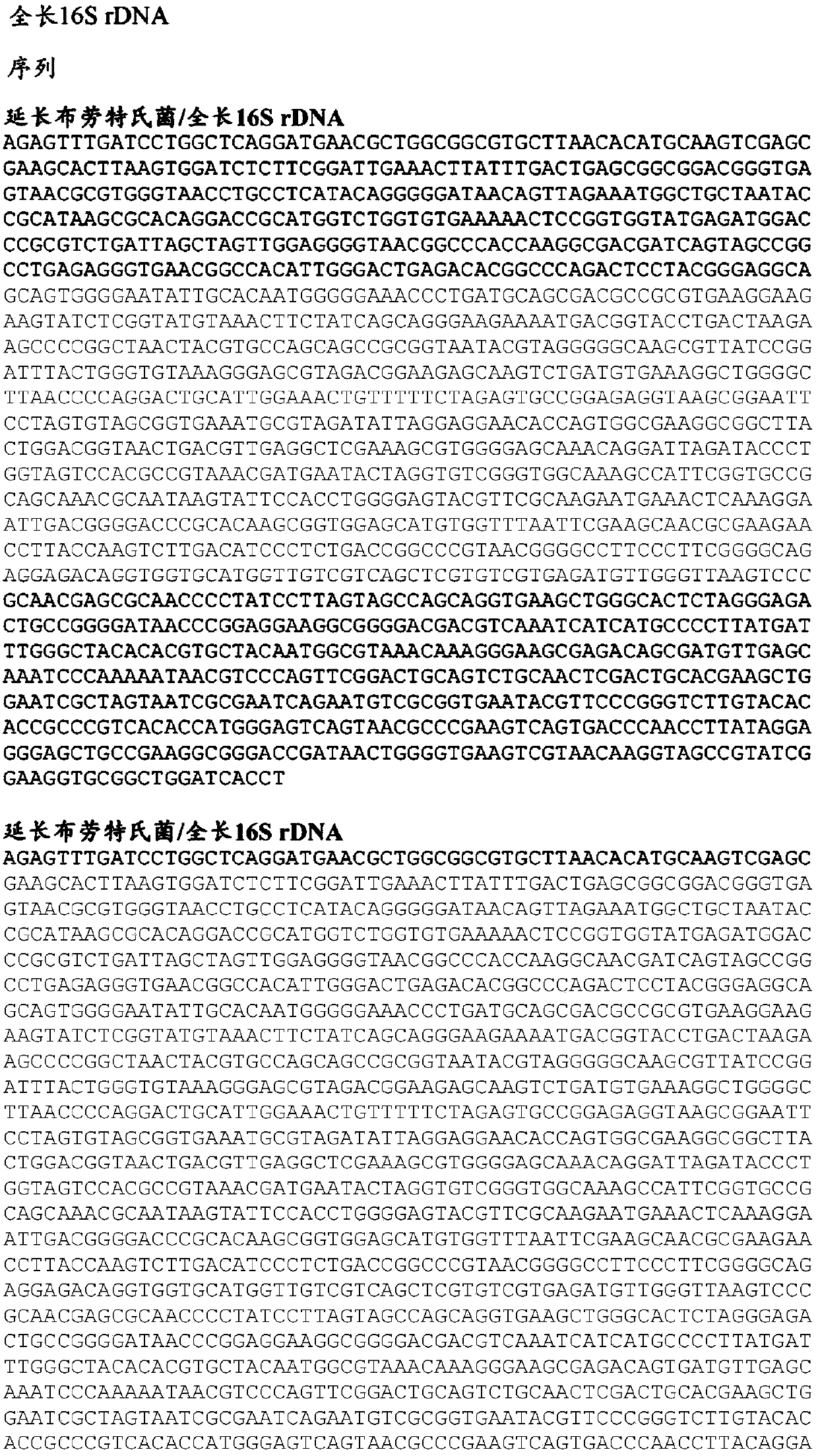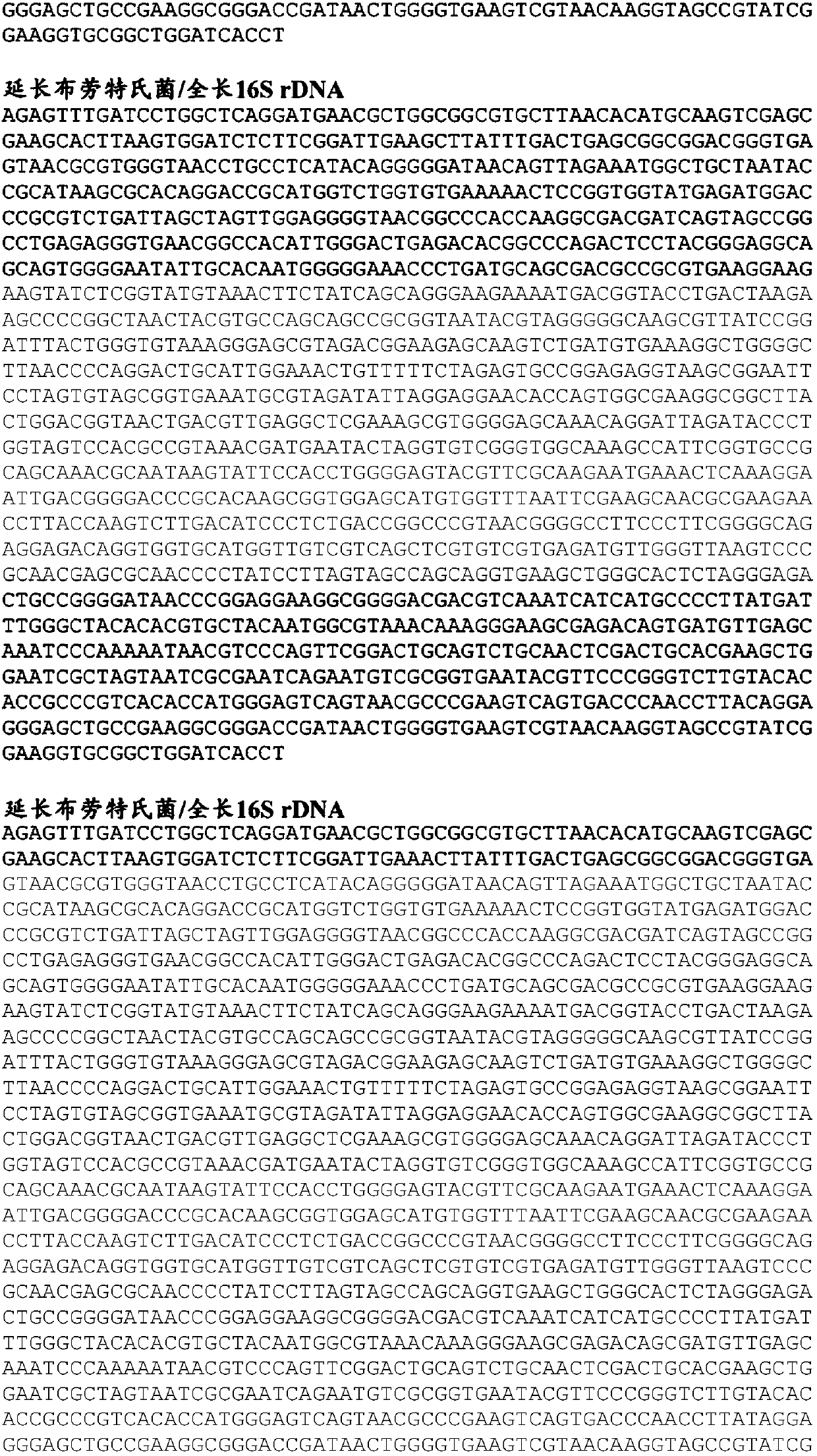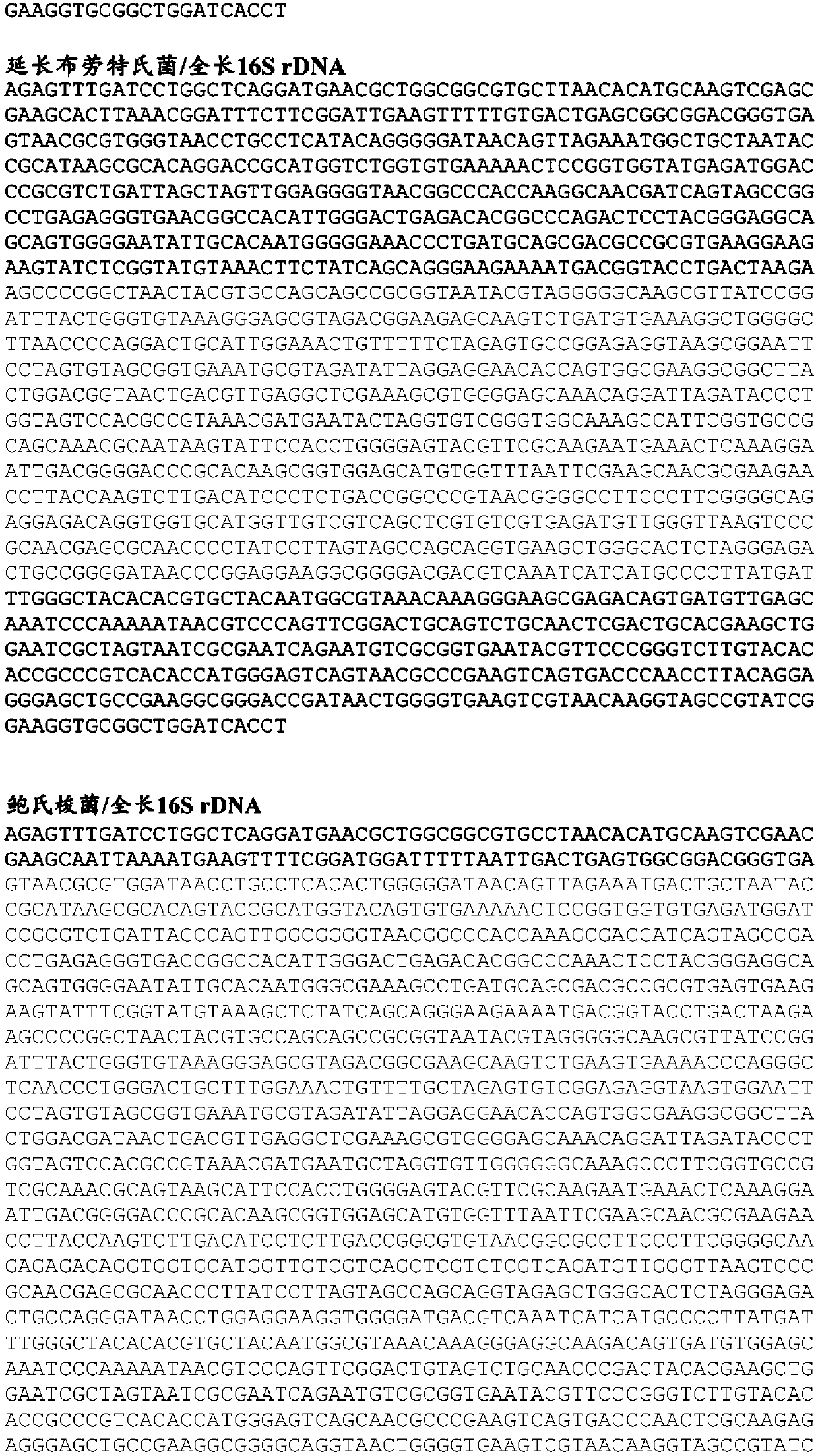Designed bacterial compositions
A composition and bacterial technology, applied in the direction of bacteria, drug combinations, antibacterial drugs, etc., can solve problems such as difficulties and reduce complete treatment compliance
- Summary
- Abstract
- Description
- Claims
- Application Information
AI Technical Summary
Problems solved by technology
Method used
Image
Examples
Embodiment 1
[0126] Example 1: Murine Model of Clostridium difficile Infection (CDI)
[0127] The efficacy of the test composition was studied using a mouse challenge model of CDI (Chen et al., 2008, Gastroenterology, 135: 1984-1992). A mouse CDI model was used to demonstrate prevention of infection. In this model, mice are pretreated with antibiotics to create dysbiosis in the gut, which increases CDI susceptibility. When challenged with orally administered C. difficile spores, mice exhibited symptoms of CDI, including weight loss, diarrhea, and lethargy, with a disease peak 2-3 days after C. difficile inoculation. Infection can be fatal, and death occurs at the peak of the disease. In mice that survived infection, symptoms resolved mainly by day 6 post-inoculation. Animals were housed in a bioBubble clean room or equivalent facility for the duration of the experiment.
[0128] Briefly, on days -14 to -6, animals (female C57BL / 6 mice, 9-10 weeks old) received an antibiotic cocktail ...
Embodiment 2
[0130] Example 2: Test Items
[0131] Applicants have tested about 100 different DBCs. In one example of such an experiment, the murine model described in Example 1 was used to evaluate the efficacy of various orally administered microbial spore preparations for the treatment / prevention of Clostridium difficile infection (CDI). Nine compositions were tested at estimated doses ranging from 1e2 to 1e5 for each individual species in the composition. Estimates of bacterial numbers were based on spore colony forming unit (SCFU) assays (ie, the number of spore-derived colonies grown on plates from stock solutions). Methods for performing such assays are known in the art and generally involve germination agents suitable for the growth of the species. Table 3 provides some of the compositions tested (supra). Negative controls included PBS alone as treatment and naive animals (not infected with C. difficile). Positive controls included treatment with a slurry of healthy human fec...
Embodiment 3A
[0136] Example 3A: Carbon Utilization
[0137]Antibiotics are known to disrupt the gut microflora, leading to loss of colonization resistance and setting the stage for infection by pathogens, including Clostridium difficile (reviewed in Keeney et al., 2014 Ann Rev Microbiol, 2014 6 2. doi:10.1146 / annurev-micro-091313-103456). The contribution of nutrient competition to C. difficile colonization resistance was suggested in earlier experiments in a continuous flow model, where glucose, N-acetylglucosamine, and sialic acid (N-acetylneuraminic acid) were identified as C. difficile carbon sources are of limited availability due to catabolism by intestinal organisms (Wilson and Perini, 1988, Infection and Immunity, 56:2610-14). More recently, sialic acid utilization by C. difficile was associated with higher C. difficile levels in a mouse model (Ng et al., 2013 Nature advance online publication (1 September 2013). doi: 10.1038 / nature12503). Thus, a useful feature of a DBC is a ...
PUM
 Login to View More
Login to View More Abstract
Description
Claims
Application Information
 Login to View More
Login to View More - R&D
- Intellectual Property
- Life Sciences
- Materials
- Tech Scout
- Unparalleled Data Quality
- Higher Quality Content
- 60% Fewer Hallucinations
Browse by: Latest US Patents, China's latest patents, Technical Efficacy Thesaurus, Application Domain, Technology Topic, Popular Technical Reports.
© 2025 PatSnap. All rights reserved.Legal|Privacy policy|Modern Slavery Act Transparency Statement|Sitemap|About US| Contact US: help@patsnap.com



